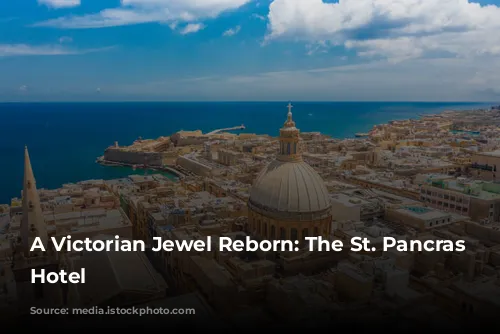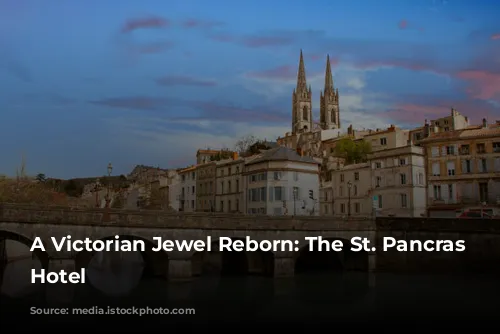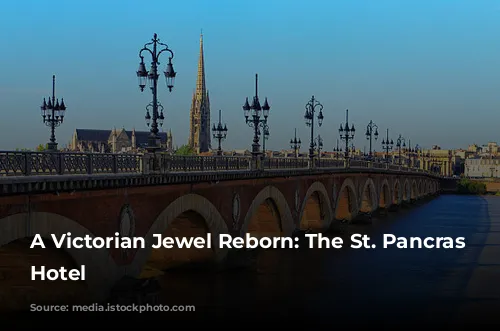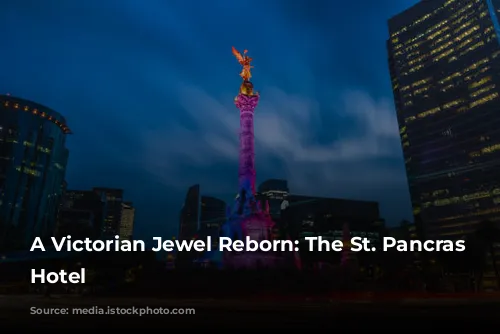Imagine a building so grand, so intricate, it resembles a cathedral more than a hotel. This is the St. Pancras Renaissance, a Victorian masterpiece nestled in the heart of London. This stunning hotel, once a symbol of Victorian opulence, has been resurrected after decades of neglect, now standing as a testament to architectural brilliance and modern ingenuity.

A Cathedral of Brick and Stone
The Midland Grand, as it was originally known, opened its doors in 1873, captivating London with its breathtaking Gothic Revival design. The architect, Sir George Gilbert Scott, a man known for his creative genius, poured his heart and soul into this project. He envisioned a structure that would transcend mere functionality, becoming a work of art in its own right. The building’s intricate façade, adorned with arches, canopies, pinnacles, and spires, was an architectural marvel, instantly recognizable and admired. However, this lavishness also sparked controversy. Critics found the design “too good for its purpose”, deeming it “meretricious” and lacking in “quiet”.

A Historic Building Awakened
Despite the initial criticism, the Midland Grand quickly became one of London’s most prestigious hotels, thriving for decades. Sadly, time and neglect took their toll, and the building fell into disrepair, facing a bleak future. However, the historic exterior was meticulously cleaned and restored in 1993, igniting a new appreciation for its grandeur. A turning point arrived when the Eurostar train terminal was moved to the nearby St. Pancras station, securing the building’s future. This strategic move brought a new wave of life to the historic structure, blending seamlessly with its past and present.
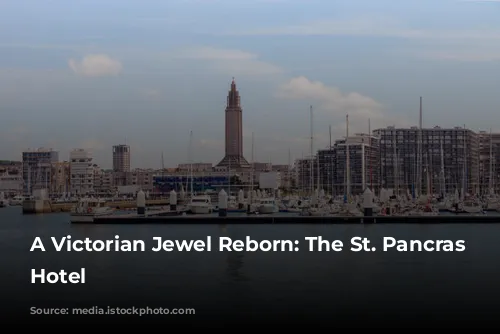
A Symphony of Detail
The conversion of the Midland Grand into the St. Pancras Renaissance was a true masterpiece of architectural ingenuity. The London firm RHWL, the architects behind this transformation, skillfully incorporated the surrounding space into the hotel’s design. The former taxi rank, now part of the hotel’s grand lobby, features a glass roof that beautifully complements the station’s arches. Every nook and cranny of the hotel is a testament to Scott’s meticulous attention to detail. Ornate carvings, unique flowers, and miniature railway personnel decorate the hotel’s public spaces, adding a touch of whimsy and wonder. The Gilbert Scott restaurant, a testament to the hotel’s rich history, features Connemara marble columns and a Greek-key frieze, paying homage to the building’s Victorian heritage.

A Stairway to Heaven
The St. Pancras Renaissance’s most spectacular feature is undoubtedly its Grand Staircase, a stunning architectural marvel. This sinuous cantilevered structure, adorned with wrought-iron balustrades, gracefully ascends through three floors, culminating in a vaulted ceiling. The stairwell’s deep-red walls, echoing a decorative scheme from 1901, add a touch of historical grandeur. Hidden beneath layers of white paint for decades, elaborate peacock-motif stencils have been resurrected in the first-floor corridors, adding a layer of intricate beauty.
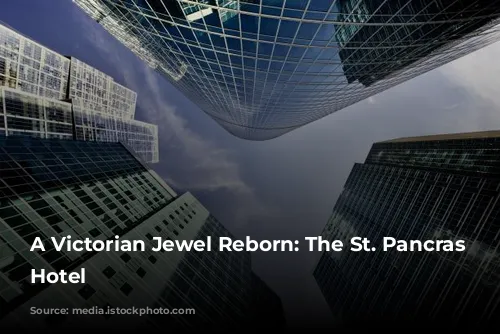
A Triumph of Conservation and Modernity
The St. Pancras Renaissance’s restoration has been hailed as a triumph of conservation and modern design. Paddy Pugh, London’s planning director for English Heritage, the UK’s conservation agency, declared the renovation “extraordinary” and praised the architects’ meticulous work. Gavin Stamp, a prominent Victorian expert, echoed these sentiments, calling the $325 million renovation “thorough, conscientious, and good.”

A Blend of Tradition and Contemporary Style
While the hotel embraces its rich history, it also seamlessly integrates contemporary elements. To accommodate its modern function, a new wing was added to the hotel, housing 207 rooms, offering guests a choice between the historic charm of the original rooms and the sleek elegance of the new wing. Modish contemporary furnishings add a touch of sophistication, while the friendly staff ensures a warm and inviting atmosphere.

A Destination in Itself
Though the St. Pancras Renaissance is nestled amidst the bustle of Euston Road, it offers a sanctuary of elegance and history. For those traveling by train to mainland Europe or northern England, the hotel’s proximity to the King’s Cross and Euston railway stations makes it an ideal choice. But even if you’re not catching a train, the St. Pancras Renaissance is a destination in itself, beckoning all who appreciate architectural marvels and Victorian elegance.
Step into the St. Pancras Renaissance, and prepare to be transported to a bygone era of grandeur and charm.
